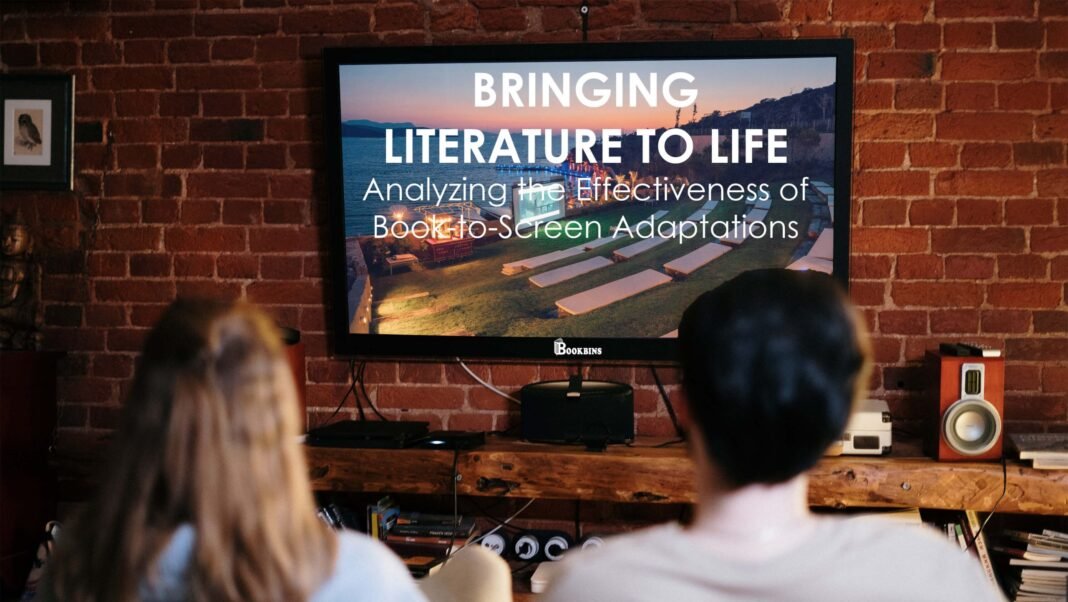Exploring the dynamic process of adapting novels into films unveils a fascinating intersection of literature and cinema. In this article, we will delve into the art of cinematic transformations, examining how filmmakers interpret and reimagine novels to create compelling visual narratives. Whether you are a literature enthusiast or a cinephile, understanding this creative process adds a new layer of appreciation to the world of storytelling.
The Art of Cinematic Adaptation
Adapting novels into films is an intricate art that requires a delicate balance between staying faithful to the source material and embracing the unique storytelling language of cinema. Let’s explore the key aspects of this transformative process.
Interpreting Literary Narratives
Filmmakers embark on the journey of interpreting literary narratives, understanding the characters, themes, and emotional arcs that define the essence of the novel. This interpretation lays the foundation for translating written words into captivating visuals.
Challenges and Creative Decisions
Adapting novels to the screen comes with its set of challenges, and filmmakers often face tough creative decisions to capture the spirit of the story in a cinematic form.
Navigating Time Constraints
One of the significant challenges is navigating time constraints. Novels, with their intricate details and subplots, may require condensation to fit within the runtime of a film. Filmmakers must carefully select and prioritize elements that drive the central narrative.
Visualizing Abstract Concepts
Visualizing abstract concepts or internal monologues present another challenge. Filmmakers employ creative techniques such as symbolism, visual metaphors, and expressive cinematography to convey complex emotions or abstract ideas that are inherently part of the novel.
The Filmmaker’s Vision
Central to the success of any cinematic adaptation is the filmmaker’s unique vision. This vision shapes the tone, style, and overall aesthetic of the film, providing audiences with a fresh perspective on the familiar story.
Interview with Renowned Director: Jane Anderson
“In every adaptation, my goal is to capture the soul of the novel while embracing the cinematic language. It’s about finding the balance between respecting the source material and infusing the film with a distinct visual identity.”
Visual Aesthetics and Cinematography
Cinematic adaptations offer filmmakers the opportunity to explore visual aesthetics and cinematography that enhance the storytelling experience. The choice of camera angles, lighting, and color palettes contributes to the emotional resonance of the film.
Engaging with Source Material
Filmmakers often engage deeply with the source material, collaborating with authors or literary experts to ensure a nuanced understanding of the novel. This collaborative approach enriches the adaptation process and maintains the integrity of the original work.
Collaboration with Authors
“Collaborating with authors is a rewarding aspect of adaptation. Their insights into character motivations and the intended emotional impact provide invaluable guidance in translating the novel into a visual medium.”
Interpreting Silence and Subtext
Filmmakers excel in interpreting silence and subtext, leveraging the visual and auditory elements of cinema to convey nuances that may be expressed more subtly in the written word. This ability adds layers to the cinematic experience.
Conclusion: A Tapestry of Literary Cinema
In conclusion, cinematic transformations of novels represent a captivating fusion of literary and visual storytelling. The delicate dance between fidelity to the source material and the creative interpretation of filmmakers results in a unique tapestry of cinematic narratives. As viewers, we are invited to appreciate the nuanced artistry that brings novels to life on the silver screen, offering fresh perspectives on cherished literary works.

